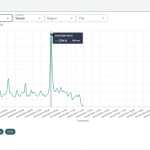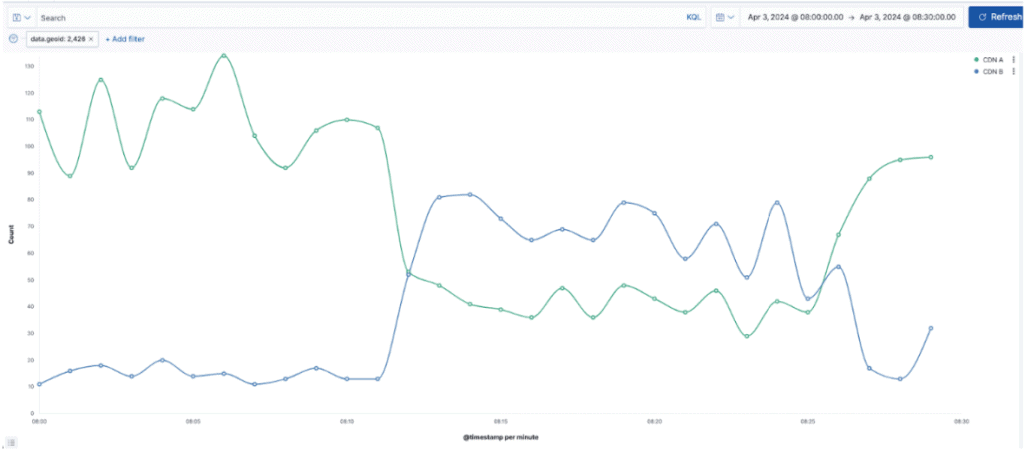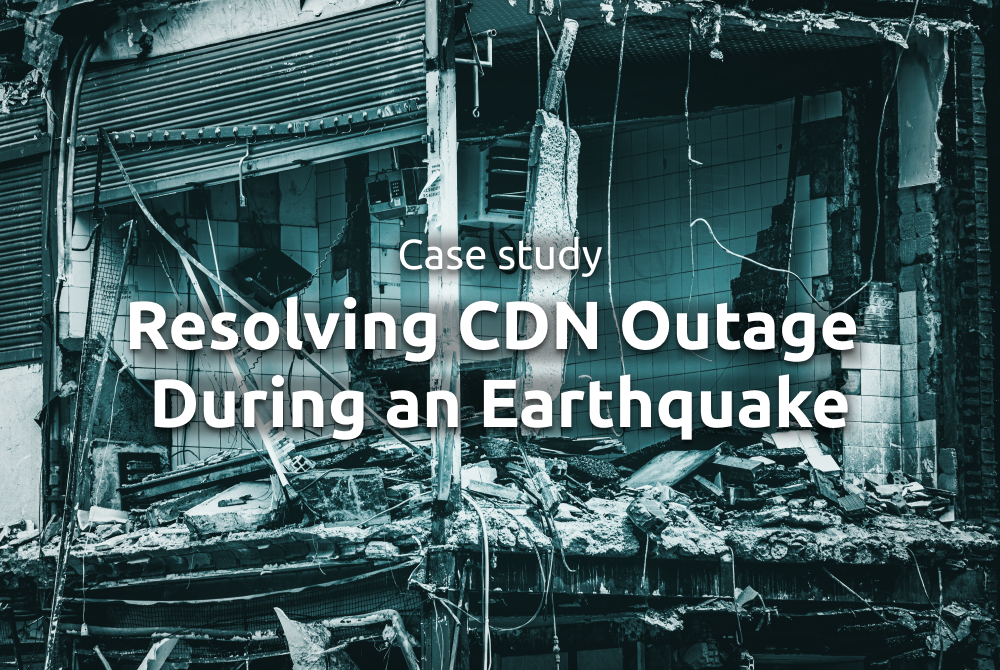Introduction
In the tech world, staying resilient during unexpected events is crucial.And the reliability of content delivery networks (CDNs) is paramount for businesses striving to maintain seamless online experiences. However, when unexpected events like earthquakes occur, CDNs can face performance challenges, disrupting user accessibility and impacting businesses. In this case study, we explore how Mlytics Smart Load Balancer technology effectively mitigated CDN disruptions during the Taiwan 7.2 level earthquake, ensuring continuity and resilience for our clients’ online operations.
Problem statement
During the earthquake, CDN A’s performance took a hit – the usual smooth operation of CDN A, which helps in delivering content quickly over the internet, was disrupted.This made everything slower for people trying to use the internet. Stuff like websites and videos took longer to show up, and sometimes they didn’t show up at all.
Specifically, two important aspects of its performance were affected: latency and availability.
Latency refers to the time it takes for data to travel from one point to another. In this case, the latency increased significantly, and the amount of time it took for users to send their requests to the server and for the server to send back the requested content increased significantly. This delay resulted in users experiencing slower loading times for websites, videos buffering for longer periods, and overall sluggishness in accessing online content.
As you can see from the charts, the latency of CDN A increased from 200 ms to 959 ms, marking a fivefold rise!

Additionally, the availability of CDN A decreased during the earthquake. Availability means how often a system is working and can be used by users. A decrease in availability means that CDN A was less reliable and more prone to downtime during this period. As a result, users may have encountered errors when trying to access websites or services that rely on CDN A for content delivery, leading to interruptions and frustrations in their online experience.
As you can see from the charts, the availability of CDN A dropped from 100% to 94%.

Overall, these disruptions in latency and availability caused by the earthquake had a direct impact on users who depend on speedy content delivery for their online activities. It highlights the importance of having resilient infrastructure and contingency plans in place to mitigate such disruptions and ensure uninterrupted service for users, especially during unexpected events like natural disasters.
Now imagine, if you’re running a digital business and rely on a single CDN, which experienced an outage – how it might influence your users.
- Online Store: During an earthquake, their website suddenly became very slow, and some pages won’t load at all. As a result, customers couldn’t shop easily, and many gave up and went to other websites instead. This meant the store lost a lot of sales and money.
- Banking Website: Picture a bank’s website where you check your account balance and pay bills. After the earthquake, the website became really slow, and sometimes it didn’t work at all. People couldn’t access their money or pay their bills on time, which caused a lot of stress and frustration.
- News Website: Think about a website where you read news articles and stay updated on current events. During the earthquake, the website became slow, and sometimes articles wouldn’t load properly. This meant people couldn’t get the latest news when they needed it most, and they turned to other news sources instead.
These examples show how relying on only one CDN can cause big problems for businesses and their customers, especially during emergencies like earthquakes, when every minute counts.
Solution
The good news is that this time, we solved the risk of an outage immediately. After the earthquake caused an outage of CDN A at 08:10, our Smart Load Balancer switched from CDN A to CDN B in just 2 minutes, and has been working without interruption since 08:12.
How did we do it?
Mlytics Smart Load Balancer technology automatically detected network anomalies and dynamically rerouted traffic to ensure optimal performance. By swiftly redirecting traffic from CDN A to a more stable alternative, CDN B, our Smart Load Balancer mitigated the impact of the earthquake-induced performance degradation.

How it Works
Smart Load Balancer operates behind the scenes, continuously monitoring network performance metrics in real-time from all over the world. When it detects abnormalities, such as increased latency or decreased availability, it springs into action. Using intelligent algorithms, it intelligently redirects traffic to the most reliable CDN provider, ensuring seamless content delivery for our users.
The result of Smart Load Balancer performance is evident:
- Resilience: By automatically rerouting traffic during network disruptions, Smart Load Balancer ensures uninterrupted service for users.
- Performance Optimization: Smart Load Balancer dynamically selects the best-performing CDN provider, guaranteeing optimal content delivery speeds.
- Peace of Mind: With Smart Load Balancer handling the heavy lifting, our team can focus on innovation and growth, knowing that our infrastructure is in good hands.
Conclusion
In the ever-changing landscape of technology, adaptability is key. Mlytics Smart Load Balancer technology showcases our dedication to innovation and resilience. By leveraging intelligent automation, we overcome challenges like CDN performance degradation during earthquakes, ensuring seamless user experiences in even the most turbulent times. Plus, with Smart Load Balancer identifying and solving issues in less than 2 minutes, our customers remained unaffected, showcasing the power of proactive network management.
Stay safe.



